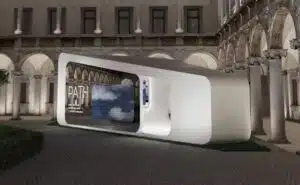These days sees the debut of the 7.2 series of the Golf, the restyling of the latest version of the Wolfsburg company's blockbuster. Which just these days has become the world's leading manufacturer in terms of cars sold. Thanks to the Asian markets and despite Dieselgate. What about the Germans? Well, they are certainly very good at serving their national interests, we should only learn from this talent. To get us on the right track here the 7 facts about the history of the Golf that you might not knowbecause they are the preserve of the insiders or the car maniacs of the people. (photo gallery with all Golf series at the bottom of the article)
The inspirational muse
In an interview, Giorgetto Giugiaro, the designer of the first Golf series, recounts an unimaginable backstory (for us Italians with the inferiority complex): 'In January 1970 I arrived in Germany, at the Volkswagen research centre. In a huge room I find a Fiat 128 all disassembled and dissected piece by piece. I ask for an explanation and the engineers answer me candidly: 'We will never be able to make a car with such refined mechanics at this price, that's why the Golf has to be smaller'. The Fiat 128 was the reference for the creation of the new VW mid-size. How things change over the years, eh?
The first small diesel
In 1976 the diesel engine came out, with the unprecedented 1471 cc displacement. It was the first time that a car manufacturer believed in such a small displacement for that engine, which was typical of trucks and large cars. The Golf's small diesel had 50 HPIt reached 140 km/h and helped change the perception of this engine among the general public.
Without Common Rail
The Common Rail system is the invention that has brought the diesel engine to be competitive with the petrol in terms of performance. The design of the new system is a collaboration between Magneti Marelli, Fiat Research Centre and Elasis in Bari. The patent was sold in 1994 to Germany's Bosch with a clause forbidding the transfer of the system rights to Volkswagen. Therefore, the first generations of Golf diesel engines used an alternative system, called PDE (in mechanics' jargon 'injector-pump') because each injector had its own pump which raised the mixture pressure to around 2000 bar. A system that has not been competitive since the advent of the Multijet (second generation common rail). The first VW diesel equipped with common rail was the 3.0 TDI, a V6 fitted in the Audi A6 in 2004.
The first cross-over (or SUV, if you prefer)
In 1990 VW presented this version of the Golf (2nd series) with a clear off-road vocation. Raised stance, bullbar, four-wheel drive and more knobbly tyres. It was the first saloon to prove that it was willing to jump the fences separating asphalt from mud and dirt. Practically the first SUV from a major manufacturer (we have talked about Rayton Fissore here). It was not a great success, only 7,735 units were produced for two years.
The convertible
There are not seven cabriolet versions of the Golf like the saloon, but only four. From time to time their design was aligned with the coeval model mainstream with cosmetic adjustments and bodywork retouches. The first two series entered into myth, still sought after by collectors and a good percentage still circulating. The third was a meteor that left no trace. Perhaps also because of the internal competition made by the Beetle convertiblea very iconic model with a much more refined design. The fourth only came out in a few rich markets (like the US and China).
Hypervitamin Golf
In 2002, Wolfsburg decided to show their muscles and produced the Golf R32, the one with the highest displacement ever made. 3.2-litre V6 petrol engine for 237 horses and four-wheel drive to best unload all those wild colts. Those who were lucky enough to try it still remember the experience with a thrill.
The last one is also the smallest (in displacement)
For the seventh series of the Golf wins the award Word Car of the Year 2013 and Walter de Silva, its designer, definitively established himself as one of the most important car designers in automotive history. We are in the era of downsizing and this series also features an engine that would perhaps have been more suitable for the Polo (or perhaps the Lupo): the 999 cc 3-cylinder petrolcapable of 115 hp thanks to the turbocharger. That's a lot of horsepower for a little engine that hums like a hummingbird and which many suspect (justifiably) is unlikely to have a long life.
Source: Wikipedia.org[mk_fullwidth_slideshow padding=”0″ images=”7910,7911,7912,7913,7914,7915,7916″ stretch_images=”true”]




